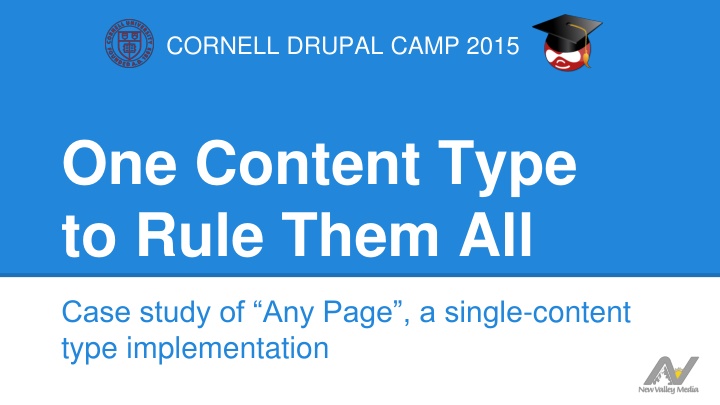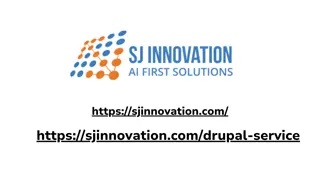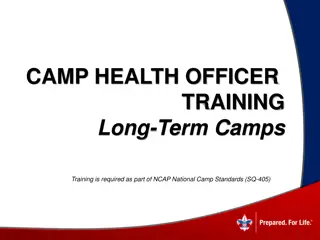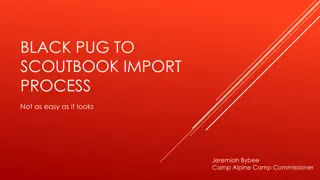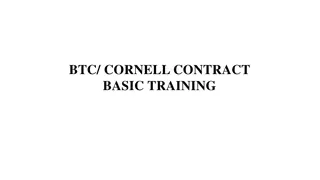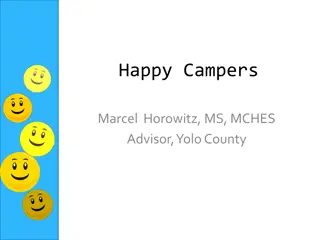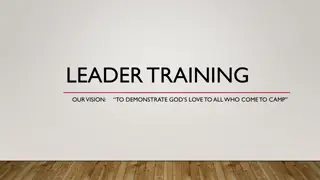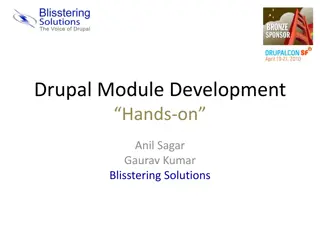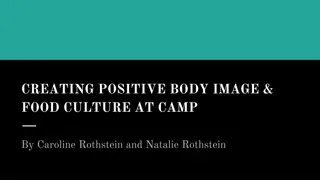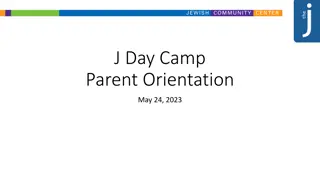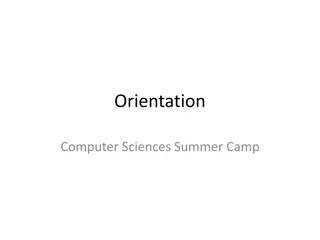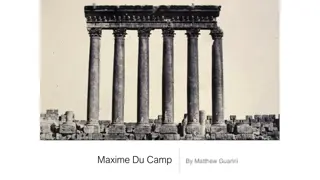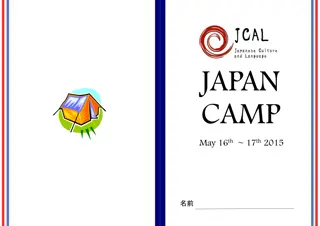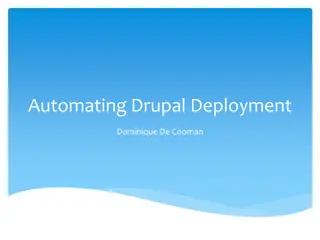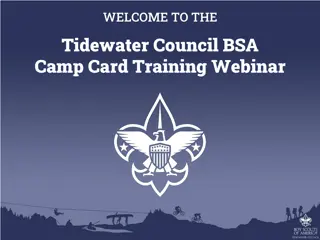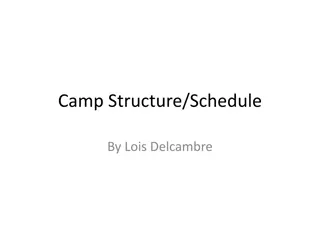Case Study of Cornell Drupal Camp 2015: One Content Type to Rule All
In this case study, the implementation of a single-content type, titled "CORNELL.DRUPAL.CAMP.2015One.Content.Type.to.Rule.Them.All," is explored. The study delves into the challenges of content type overload in Drupal, addressing the advantages and disadvantages of the platform in handling various content types. Additionally, the presentation discusses the need for a more flexible approach, focusing on a single-content type solution named "Any Page" to streamline content management and improve editor control over page elements.
Download Presentation

Please find below an Image/Link to download the presentation.
The content on the website is provided AS IS for your information and personal use only. It may not be sold, licensed, or shared on other websites without obtaining consent from the author.If you encounter any issues during the download, it is possible that the publisher has removed the file from their server.
You are allowed to download the files provided on this website for personal or commercial use, subject to the condition that they are used lawfully. All files are the property of their respective owners.
The content on the website is provided AS IS for your information and personal use only. It may not be sold, licensed, or shared on other websites without obtaining consent from the author.
E N D
Presentation Transcript
CORNELL DRUPAL CAMP 2015 One Content Type to Rule Them All Case study of Any Page , a single-content type implementation
Presenter Will Jackson Senior Drupal Developer Resident Commerce Consultant System Administrator DevOps Engineer
New Valley Media Drupal Development and Support Company Located in Aiken, SC
Introductions Why single-content type? Our model: Any Page ECK and other construction tips The Future Who are you? Site builders, developers, themers, content managers, etc Most content types on a site?
Problem 1: Content type overload Advantage of Drupal: Add as many content types and fields as needed Disadvantage of Drupal: Add as many content types and fields as you think you need And content types are rigid!
Traditional Content Models Focus on content types. Assume that unique content type is needed for each page variation. Still connect presentation to architecture. (References: http://pointnorth.io/#content-modeling http://alistapart.com/article/content-modelling-a-master-skill)
Problem 2: Design trends Single-page and long-form pages. Mix of visuals: images, videos, graphics. Editors want to control order of elements. Mix of default and custom sidebar blocks.
Single-content type solution: Any Page
Single-content type solutions Rather than content types, IA focuses on content organization. Complex pages (such as landing pages) can be controlled by editors. Easier flexibility for non-content regions, such as sidebars.
Single content type: Any Page Content model Content type Site structure Page type tags Reusable blocks Built-in style options Fields Custom Theming
Example: Events Content type: Title Date Location Description Type of event Registration form Photo, gallery, video Speakers Handouts Single content type: Title Tag: Event, Types Blocks: Event, Text, Image, Video, Person, Doc Attachments, etc.
Any Page: Module magic STRUCTURE Entity Construction Kit Entity Reference Inline Entity Form Context, Features Views, View Field Media Automatic Entity Label UX ENHANCEMENTS/PRESENTATION Field Group Multiple Selects Display Suite / Extras Fields Conditional Field Formatter Settings Field Formatter Conditions
Entity Construction Kit Create/Manage entities and bundles from UI. Manage properties and custom behaviors. Create bundles to share entity configuration. Thousands of compatible modules (Field UI).
Alternative tagging: Options entity Options entity type with two bundles Option Type: parent, such as Page Type Option: child, such as Event, Blog, Product, News, etc. Also used for supporting options in the Any Blocks: Layout Options, Link Style, Image Style, Color Scheme, etc.
Option fields Label: human-friendly description Machine name: o CSS-friendly string o Applied as classes to streamline theming o Related to Bootstrap classes or variables Example - Block Color Scheme: o Label: Purple background / white text o Machine name: color_brand_contrast_white
Any Page node fields Entity reference fields: o Main content o Left sidebar o Right sidebar o Content top o Content bottom Default globals Title Tags: Page type, categories Teaser and teaser image
Any Page node fields Entity reference fields: o Main content o Left sidebar o Right sidebar o Content top o Content bottom Default globals Title Tags: Page type, categories Teaser and teaser image
Page Type tag is alternative to separate content types. Can be changed as node usage changes. Other functional or presentation tagging can be added as needed.
Recommend using Teaser because there is no standard Body field to use as a fallback.
Any Block types Each type based on functionality. Most block types can be used in any field. (AKA page region: main content, sidebar, etc.) Limited field reuse.
Any Block types Link (menu-style) Location block Product System block (blocks from core and modules) Video block View / List block (blocks from Views) Text block Accordion block Contact block Document Attachments block Event block Featured Media block Form block Image (grid / slideshow)
Any Block: Text block Administrative Title Display Title (with optional link) Style Options (alignment, padding, color, layout) Body Image o Options (style, position, link) o Image (base and hover) Links o Link style (text or button) o Title (optional link) o Links
Inline Entity Form Created by the Commerce Guys for Commerce Kickstart. Create referenced entities inline without leaving the form. Integrate with any new or pre-existing entity. Streamline content forms
Life cycle of a page 1. Announcement: Text, images 2. Event: Retag. Add Event, Location blocks 3. Report: Retag. Add Video block. 4. Resource: Retag. Add Document Attachment block.
Technical considerations Performance o Complex configurations may be resource intensive. Commerce o Additional customization required for contrib displays Search o Contributed Module Limitations
Review Advantages of a single content type o Content that evolves to what you need o Simplify the process for content editors Condense Content Types o Solve the problem of a content type for everything
Questions Are there any questions? @willjackson00
Any Page uses two custom entity types: Any Block and Option Type Two custom entity types
Any Block bundles Related: Item Sets used in block Any Block: parent bundle Parent Bundle (no blocks) Text Block: multi-purpose workhorse also includes image and links Accordion Block: primary field is multi-field Accordion Item Set. Multi-Block Wrapper: allows other blocks to be displayed in one row. Container block Special Purpose SEO Description: not available as block; used separately. Workhorse
Administrative Title (instead of Title) for easier labeling All bundles have separate Display Title field Any Block properties
Create or reuse entities in this region. All blocks are displayed in a vertical stack. Main content field
Option to override default display settings on Global sidebar blocks. Create or reuse entities in this region. All blocks are displayed in a vertical stack. Left sidebar field
Create or reuse entities in this region. All blocks are displayed in a vertical stack. Right sidebar field
Display options for blocks displayed in Content Top region. Create or reuse entities in this region. Content top field
Display options for blocks displayed in Content Bottom region. Create or reuse entities in this region. Content bottom field
